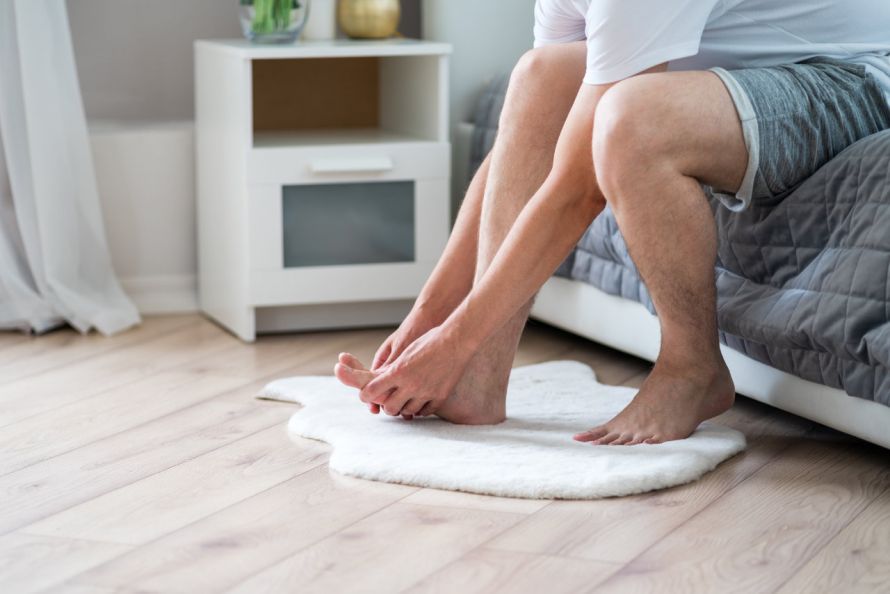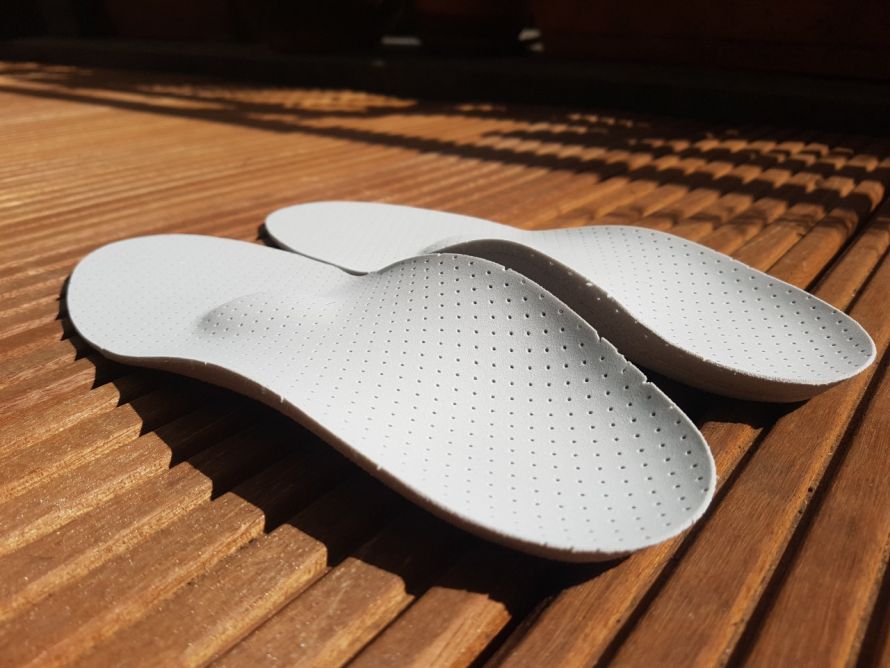Recommended specialists
Brief overview:
- What is hallux rigidus? It is the wear and tear (osteoarthritis) of the metatarsophalangeal joint of the big toe, causing sufferers to feel pain and later not be able to move the big toe at all.
- Risk factors: Overloading and incorrect loading, incorrect footwear, injuries, hereditary factors, metabolic diseases such as gout, and excessive compression pressure on the metatarsophalangeal joint of the big toe.
- Symptoms: Severe pain and restricted toe joint movement, weather sensitivity, and inflammatory reactions.
- Conservative treatment: In the initial stage, special shoe insoles in combination with anti-inflammatory drugs or cartilage-rebuilding medications are suitable.
- Surgical treatment: Various options are available to choose from. Complete fusion of the joint is the standard therapy, restoring freedom from pain and mobility. Cartilage reconstruction and joint replacement are other options.
- Prevention: If malpositions are known, they should be treated early to prevent hallux rigidus from developing.
Article overview
What is hallux rigidus?
Hallux rigidus is a wear and tear disease (osteoarthritis) of the metatarsophalangeal joint of the big toe. Colloquially, it is also called a stiff big toe.
The area affected is between the first metatarsal and the proximal phalanx of the big toe. As it develops, hallux rigidus leads to pain as well as restricting movement, which makes rolling off the big toe very difficult or not possible at all.
The reason for this is the continuous loss of cartilage mass in this joint, which is typical of osteoarthritis. In a late stage, the bone surfaces rub against each other because the articular cartilage is severely damaged or completely absent.
How does hallux rigidus develop?
In a large number of cases, the origin of hallux rigidus is not completely clear. However, there are factors that can increase the likelihood of developing this disease. For example, overloading or incorrect loading can play a role, or even the wrong footwear. Competitive athletes, for example, are at greater risk in this regard, as their joints are generally exposed to higher loads.
Factors such as minor, possibly undetected injuries can also result in hallux rigidus. Hereditary factors must also be included in the list of possible causes.
Malposition of the foot can contribute to the development of hallux rigidus due to incorrect loading of the metatarsophalangeal joint. For example, if the ankle joint buckles while walking, this puts strain on the knee, foot, and the big toe. This malposition in the ankle joint is called overpronation.
A metabolic disease such as gout is also a possible cause. It often triggers secondary osteoarthritis, which can also affect the joint of the big toe.
Another cause: Excessive compression pressure on the metatarsophalangeal joint of the big toe.

Hallux rigidus causes pain in the joint of the big toe © staras | AdobeStock
What are the symptoms of hallux rigidus?
There are some symptoms that indicate hallux rigidus. Severe pain in the toe joint in connection with an increasing restriction of movement is typical. The stiffness of the joint prevents the toe from rolling as normal.
Inflammatory reactions may also occur. These are manifested by
- Swelling,
- Redness,
- Being hot to the touch, and
- Further pain and functional limitations.
In addition, over time
- Tightness in the shoe of the affected foot and
- A certain sensitivity to the weather, especially in cold temperatures,
can occur.
A clinical examination by the attending physician, usually an orthopedist, can bring clarity in most cases. Lack of mobility as well as so-called bone spurs (exostoses) are signs of hallux rigidus.
The following symptoms in the metatarsophalangeal joint area indicate hallux rigidus:
- Pain,
- Inflammatory reactions,
- Restrictions in movement,
- A feeling of tightness in shoes,
- Weather sensitivity, and
- Lack of ability to roll the toe.
How is hallux rigidus treated?
In the treatment of this disease, a fundamental distinction must be made between conservative and surgical therapy. The type of treatment depends on
- The stage of the disease,
- The psychological strain on the affected person, and
- Their desired level of activity.
Conservative treatment
In the early stages, special hallux rigidus insoles or hallux rigidus shoes can provide relief. The insoles are usually made with a stiff sole. This transfers the rolling motion from the big toe to the sole. The result is less movement in the toe joint and therefore less pain.
With a bunion roll, the mobility in the toe joint is also restricted, thus also bringing about pain relief. Athletes who suffer from hallux rigidus may benefit from a different technique: The sole area under the toe is milled open and lined with a soft material. This also prevents the toe from being pushed too far towards the back of the foot when rolling on or off, which would lead to severe pain.
Other conservative treatment methods include the administration of anti-inflammatory drugs or cartilage-rebuilding medications.

Orthopedic shoe insoles can already help with hallux rigidus © glashaut | AdobeStock
Surgical care
An operation within the scope of foot surgery is an option if
- The disease is too advanced or
- The conservative treatment methods are not sufficiently effective.
Various surgical techniques are available for this purpose.
In standard surgical therapy, the metatarsophalangeal joint of the big toe is completely stiffened (arthrodesis). The damaged cartilage is removed during this hallux rigidus surgery, and the two joint surfaces are firmly screwed together.
Despite patients' initial reluctance to undergo fusion, most patients are very satisfied after the procedure. As a result, not only does the pain largely disappear, but athletic exertion can also be restored. The rolling motion of the toe is predominantly provided by the terminal joint of the toe.
Cartilage reconstruction represents another procedure. In this procedure, damaged cartilage is restored by a graft from other parts of the body. Alternatively, a membrane can be used to stimulate cartilage growth. As with the knee joint, these methods have not yet been conclusively researched scientifically, and success is not guaranteed.
Another hallux rigidus surgery is a joint replacement. However, this method should only be used if all other methods of joint preservation no longer bear fruit.
One disadvantage of joint-preserving therapies is that they do not eliminate the cause of hallux rigidus. The disease can thus progress further and further. Shortening of the metatarsal bone, which widens and decompresses the joint cavity, is also offered by some specialists.
Postoperative therapy
After hallux rigidus surgery, the first priority is pain reduction. Professional lymphatic drainage helps against the swelling.
Mobilization should be started as soon as possible, except after joint fusion. Depending on the degree of discomfort, the therapy can extend over a period of several weeks to several months. After a fusion, the foot is immobilized for 6-12 weeks, depending on the postoperative healing process.
How can hallux rigidus be prevented?
It is not always possible to prevent this disease, because the causes are manifold.
If there are malpositions, they should be treated with insoles or with special footwear. Malpositions may not only lead to hallux rigidus, but also to problems in other joints, such as the ankle or knee joints.























